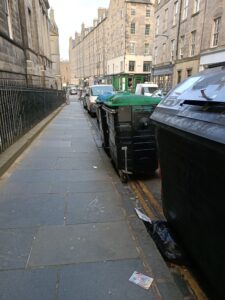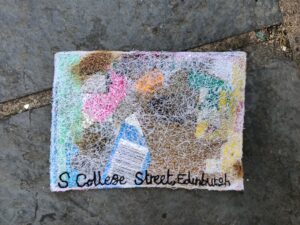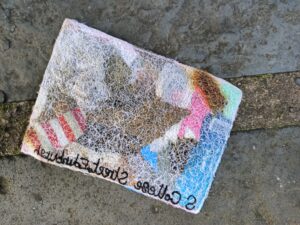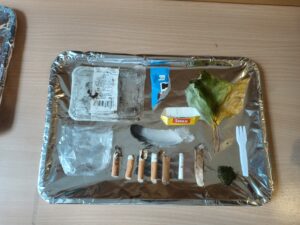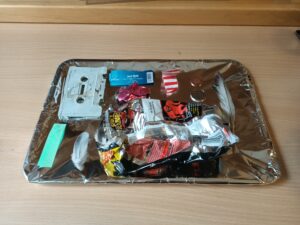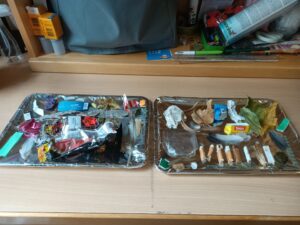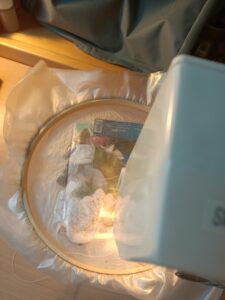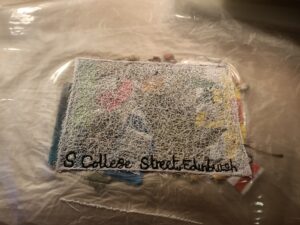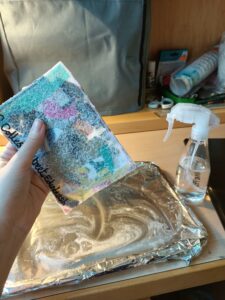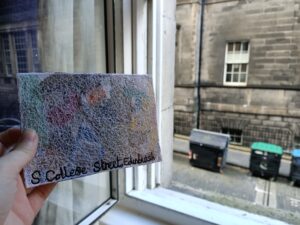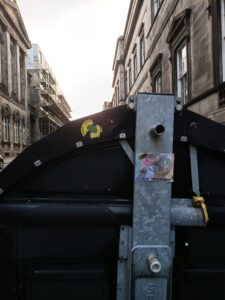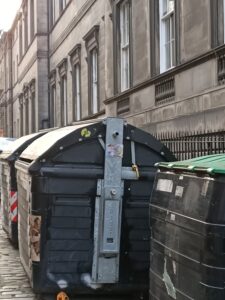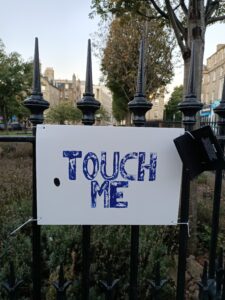
TOUCH ME, a public postcard.


One of the most interesting parts of a postcard, in my opinion, is that it is a platform for connection and relationship. The tactile nature of a postcard lends itself to an intimacy between its sender and recipient, the effort of sending a postcard itself creates the implication of closeness between the two parties, even more so in the modern world where instant communication is the standard. Historically postcards are known to have contained messages to distant family members, or separated lovers, as well as stories of holidays and life changing events.
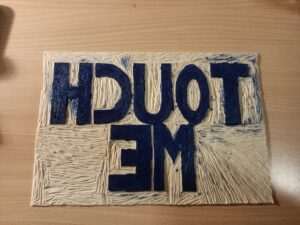
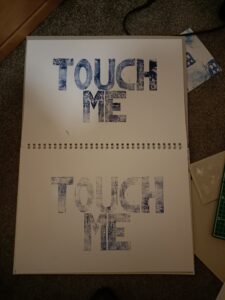
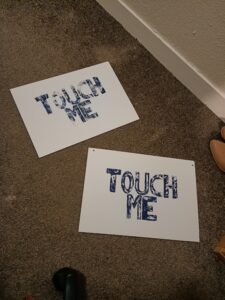
Due to the current Coronavirus pandemic, physical connection with others has been stunted. Our worlds have grown smaller as “the general public” has become a slur for “the infected masses”, it currently being illegal to meet with anyone living outside of your household. ‘TOUCH ME’ embodies my will to connect with those around me, a pulse check on the city; are there others out there?
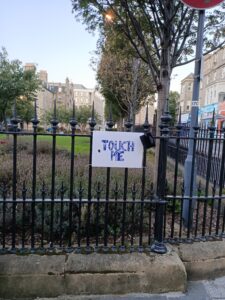
The print is on an A3 piece of Styrofoam (not waterproof at all), and I zip-tied it and an ink pad to iron railings in a busy section of Nicholson Street, known for its abundance of students. I installed the piece at 7:00am on Sunday the 27th September, and placed the first finger print myself.
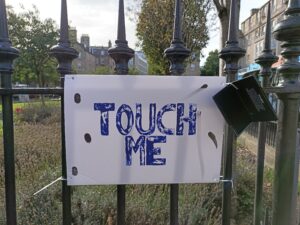

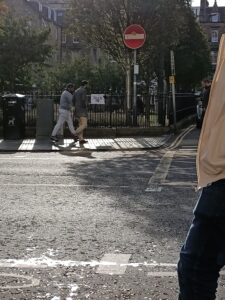
I checked up on the card at around 2:00pm the same day, happy to see that it was still there and had gained a couple responses. While I watched it garnered a few looks, with a couple of groups slowing down to look but no one going so far as to contribute.
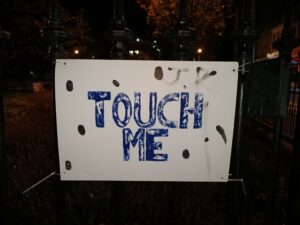
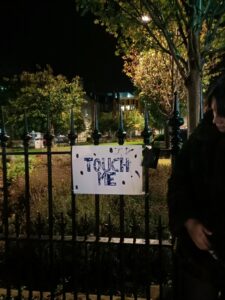
At 1:00am on 28/09 I checked on the card a final time and it had gained a fair few more responses, doubling since my previous visit. Still, the visual effect was less than impressive and gave my cause to think about the difficulty of engaging an anonymous public in an artistic piece, particularly if it requires the sacrifice of an inky finger. I was, however, very happy with the appearance of some variation, in the initials which appeared in the top right hand corner, and I was glad that it hadn’t yet been taken down. I have therefore decided to leave the postcard up, and will continue to monitor the response, if any.


